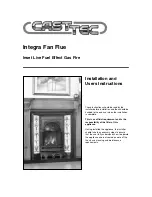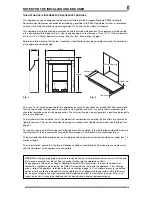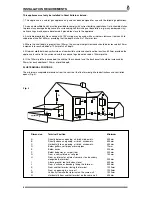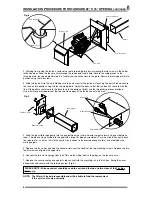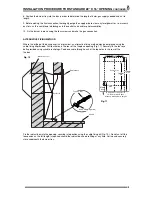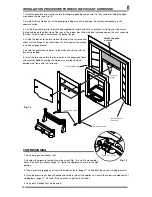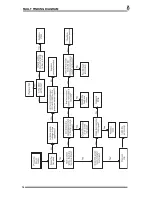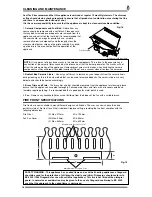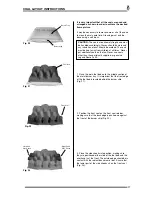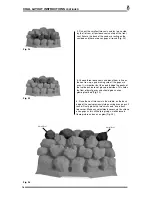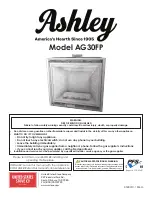
THIS APPLIANCE IS INTENDED FOR DECORATIVE PURPOSES
This appliance has been designed, tested and manufactured to the European Standard EN509 relating to
Decorative Gas Appliances and
must
be installed by a qualified GAS SAFE Registered Installer in accordance
with the Gas Safety (Installation and use) regulations 1994 and all other relevant standards.
This appliance must be connected in accordance with the National Regulations. The appliance must be sealed
into a non-combustible fireplace (Fig. 2) whose only opening must be through a Class I (7” or 175mm diameter)
or Class II (5” or 125mm diameter) chimney / flue of at least three metres in height.
Before installation, ensure that the local conditions, (identification of gas type and pressure) and the adjustment
of the appliance are compatible.
NOTES FOR THE INSTALLER AND END USER
3
An air vent is not normally required for this application because its input does not exceed 7kW. We recommend
that the chimney/flue is swept prior to installation of this appliance and that any flue restrictor or damper plate
should be removed or fixed in the open position. The chimney/flue must always generate a positive up draught to
ensure safe operation.
The installer must then establish that all the products of combustion are entering the flue within five minutes of
lighting from cold. This can be verified by traversing the canopy with a lighted smoke match (see ‘Spillage Test’
page 5).
An isolation valve must be fitted adjacent to the appliance. When closed, this will allow the complete burner and
control assembly to be disconnected for maintenance or repair in accordance with national regulations.
The gas supply should be provided by a semi rigid pipe with an 8mm diameter and should be no longer than 1.5
metres in length.
Prior to installation, ensure that the local distribution conditions (identification of the type of gas and pressure)
and the adjustment of the appliance are compatible.
NOTE:
When the gas supply pipe is passed through masonry or other brickwork always ensure that the end
of the pipe is covered to avoid any debris passing through into the appliance controls.
The appliance is fitted with an Oxygen Depletion Sensor (ODS) that monitors the room for products of
combustion. If products are detected, the ODS will automatically shut down the appliance. If this situation
arises, re-light the appliance, referring to the user instructions (page 14). If shut down re-occurs, a qualified
person must be called to thoroughly check the appliance. The spillage monitoring system (ODS pilot) must
not be put out of operation or be tampered with or adjusted by either the installer or the user. If the unit is
found to be at fault it should be replaced with the manufacturers original replacement parts.
Fireplace Opening
150mm (min)
50mm (min)
300mm (min)
Fig. 1
Fig. 2
145mm
512mm
608mm
Summary of Contents for Integra Fan Flue
Page 14: ...FAULT FINDING DIAGRAM 14...

